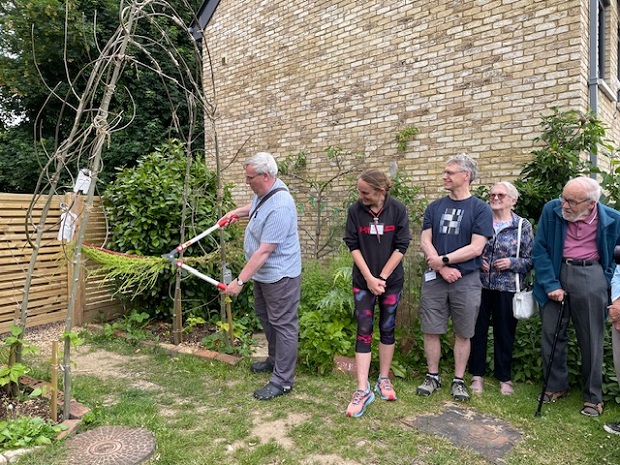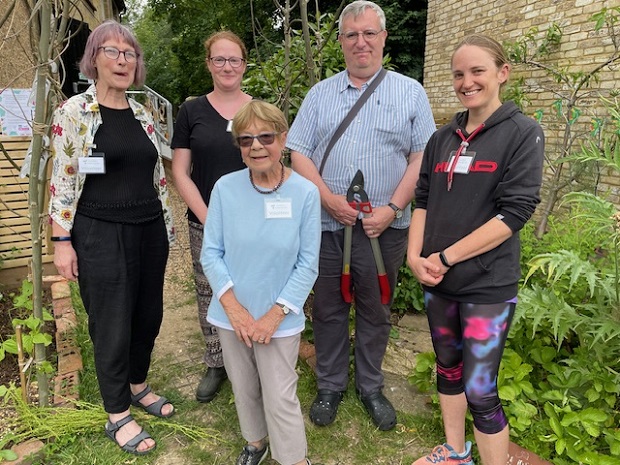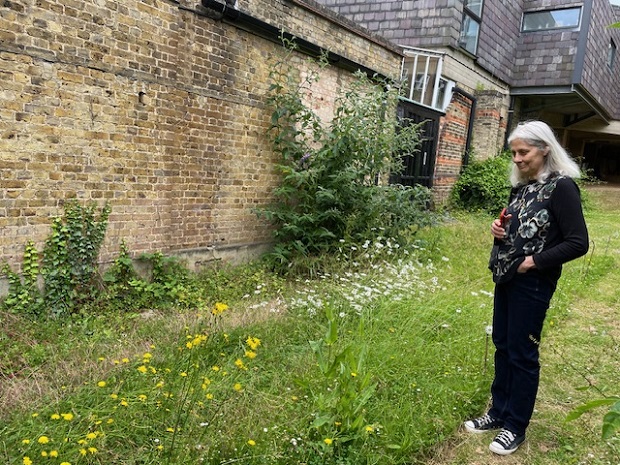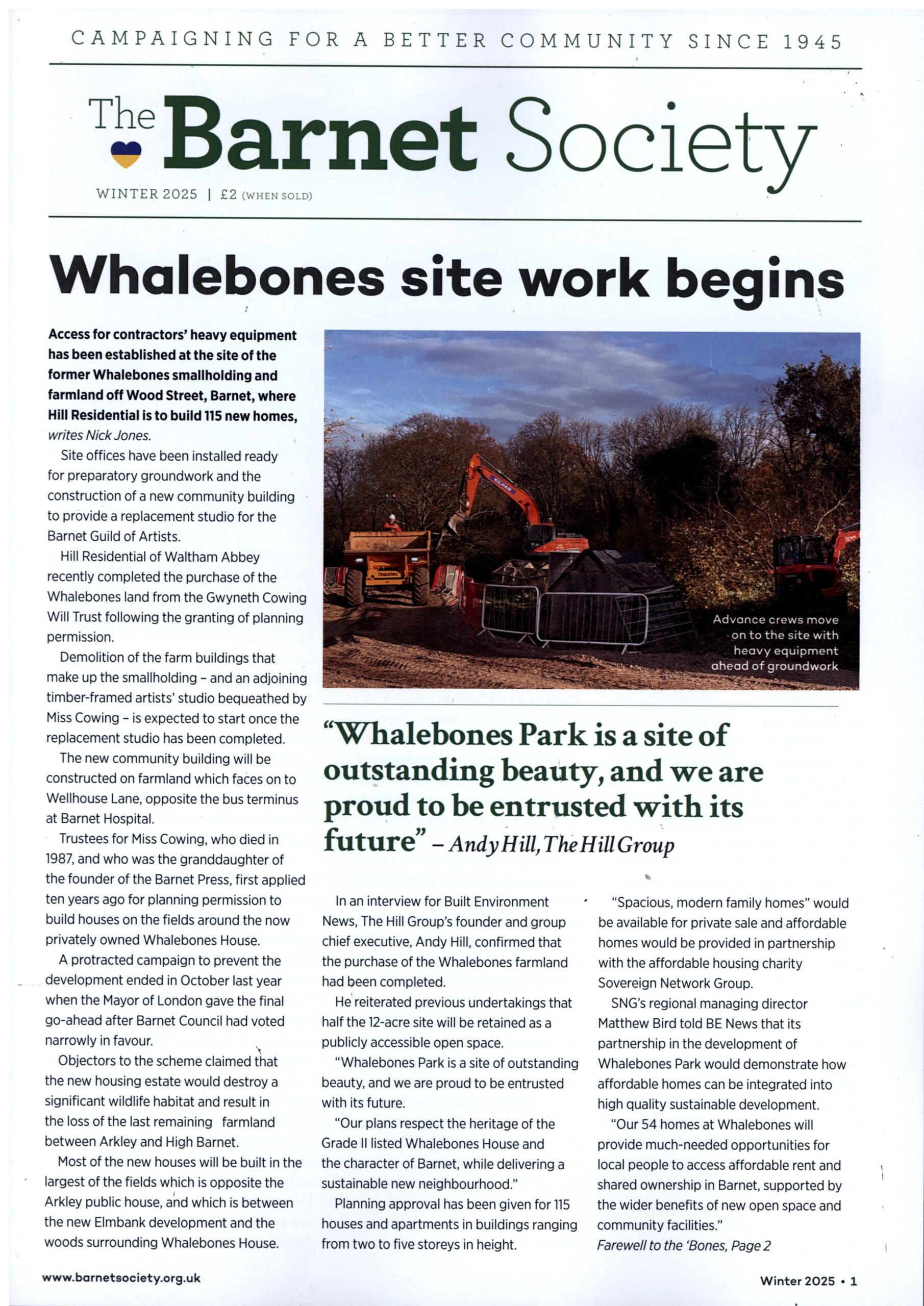New Barnet’s innovative green space now features a well-being garden and a wildflower meadow

An extension to a community garden and green space which is now along three sides of a New Barnet church was officially opened at a garden party to celebrate the success of Barnet’s Incredible Edible campaign.
Wendy Alcock, founder of a local initiative to encourage home cultivation in gardens and on unused land, was delighted by the support and interest which all the efforts of the campaign’s volunteers are attracting.
These three strips of land outside the church now provide a structured garden and wildlife habitat that supports a total of 85 plants which have edible leaves, flowers or fruit.
Barnet Vale councillor Richard Barnes (see above) cut a ribbon of twigs across an arch of branches at the entrance to the enlarged garden outside St John’s United Reform Church in Mowbray Road, New Barnet.
Wendy thanked councillor Barnes for the help he had given in securing a grant of £9,300 from Barnet Council’s infra structure levy fund to meet the cost of providing direct access via a ramp at the rear of the church and the expense of clearing and preparing land which used to be a rubber floored nursery.

The scale of the transformation achieved by Wendy and her Incredible Edible team of volunteers amazed Councillor Barnes and other guests. (See above, from left to right, Heather Elsdon, Wendy Alcock, Sue Taylor, Councillor Richard Barnes and Micheline Regnard).
Councillor Barnes acknowledged the importance of Wendy’s campaign. She had to be congratulated for her inspiration and all she was doing to promote healthy eating and the home cultivation of fruit and vegetables.

Wendy – seen here at a new seed and plant exchange table – said this was their eighth growing season in the Mowbray Road community garden.
The extension to their plot provided room for a well-being garden and a quiet space beside the church where people could sit and enjoy looking at the plants.
On one side of the church the Incredible Edible team have been creating a wildflower meadow.

Lis Rolls (see above), an organic gardener, has been giving advice and tips on planting and mowing to help make the grassy area more diverse and sustainable.
She recommended that to help build up the diversity and range of plants and flowers it was best to mow the area in the late summer after natural seeding.
Lis pointed out yellow rattle, a wildflower which had a root system which restricts the growth of grasses and enables other flowers to establish themselves.
Already, after just three years, the wild meadow now includes a wide range of plants and flowers – not just yellow rattle, but Ox-eye daisies, Hawkbit, alkanet, buttercups, dandelions, daisies, clover, ragwort and teasle.

